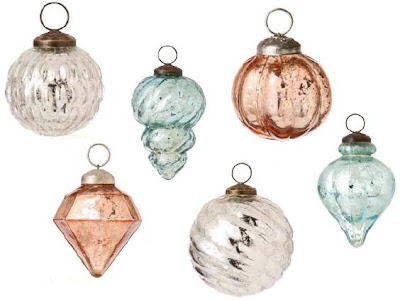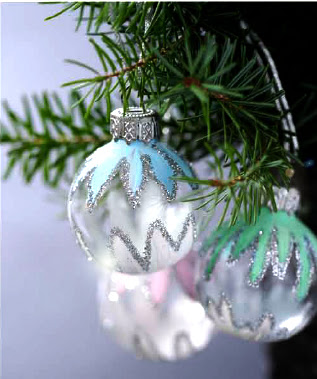Christmas Ornaments - glass ornaments
It's one of the most exciting times during the Christmas season when the Christmas tree is brought home and the decorations start. Glass Christmas ornaments are the ones that are almost always used, even if there are other types, like Victorian ones or crystal ones, which are also used to spruce up the look of the tree. Most families accumulate decorations over the years, and every year some old ones give way to new ones. The idea of decorating Christmas trees started in the early 1800s when fruits and nuts were used as decorations. These, along with the evergreen tree, supposedly reflected the belief that despite the freezing cold, normal life would return in spring.
It all started in Germany
Around the second half of the Nineteenth century, Germans became the first to manufacture ornaments and sell them solely to be used as Christmas decorations. It started at a place called Lauscha, which was, at that time, a hub for glass making. Looking at the possibility of a huge market, these glass manufacturers started making glass Christmas ornaments. The initial shapes were of saints, stars, famous people and animals. The concept picked up fast.
Glass ornaments became very common on Christmas trees. It then became a tradition to hide a green colored glass Christmas ornament, in the shape of a pickle, somewhere in the Christmas tree. Legend has it that it was done so that he most observant child, who found the pickle in the ornament laden Christmas tree, would be rewarded with additional gifts on Christmas day. There are other variations to the story as well. No one knows if these stories have any truth, but the practice of hiding a glass Christmas ornament in the shape of a green pickle continued.
Improved manufacturing process
By the twentieth century, Christmas had become immensely popular and other countries were also making glass ornaments. The number, complexity, variety, shape and size of glass ornaments expanded rapidly. These glass ornaments were handmade and retained pure craftsmanship. However, around 1940, the Corning Company in America started manufacturing glass ornaments with a modified light bulb producing machine. Because of the machine aided manufacturing process, they could produce relatively huge quantities of glass ornaments, compared to the few hundred that the traditional handmade process in Germany could produce. The manufacturing diminished during World War II from lack of raw material. However, after the war, production of glass Christmas decorations started exploding.
Today, glass Christmas ornaments of almost every possible size, shape and color are available in retail. The early days of handcrafted elegance are, of course, gone. It's replaced by machine manufactured ornaments in the millions. However, over the years, the manufacturing process has improved substantially and some of the glass ornaments produced today are amazingly intricate and colorful. You can now find glass ornaments in the shapes of angels, animals, birds, hearts, icicles, musical instruments, Santa Clause, stars and other household items as well.
The glass ornaments remain fairly fragile because of the very thin glass they are built with. Also, the layers of color on the inside and outside could start peeling off after a few years. At the same time, modern manufacturing processes and low cost manufacturing in countries like China has brought the prices down substantially. Simple glazed ball type ornaments are typically available for less than $3 for a box of 8. Ornaments with intricate shapes are more expensive.
Christmas Ornaments - glass ornaments







Christmas Ornaments - glass ornaments


Christmas Ornaments - glass ornaments